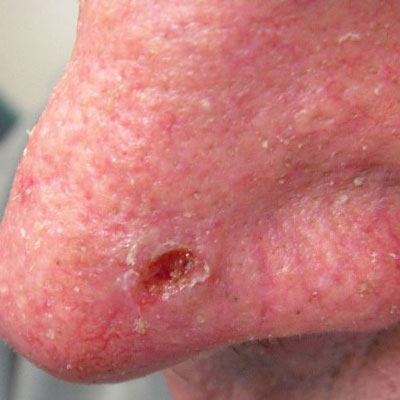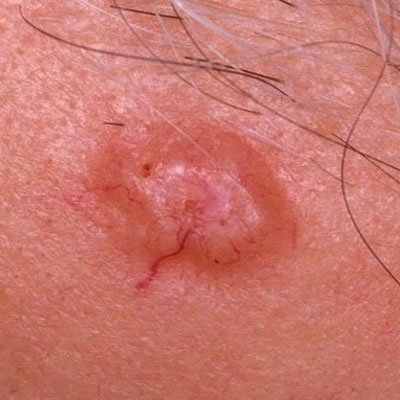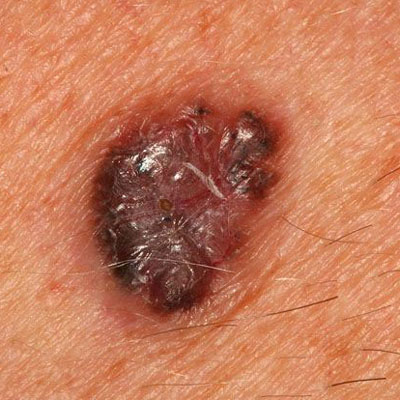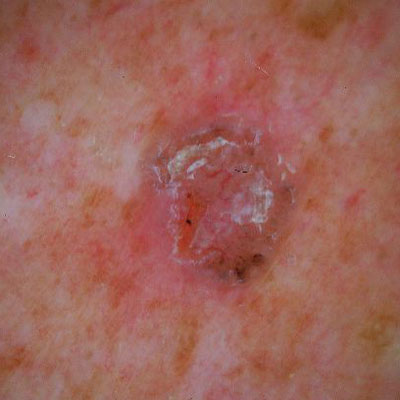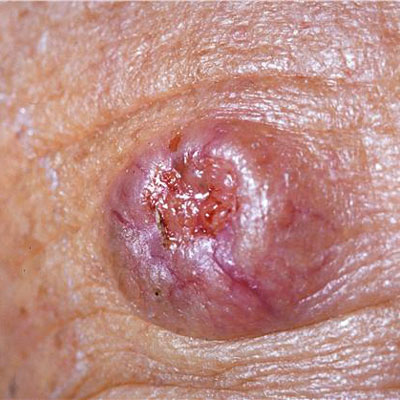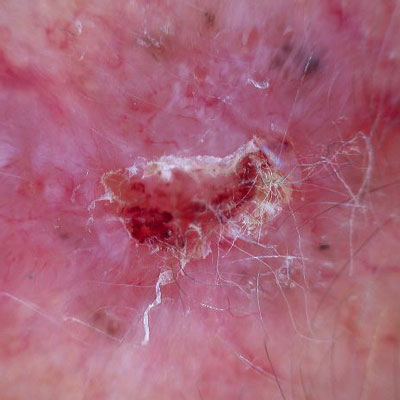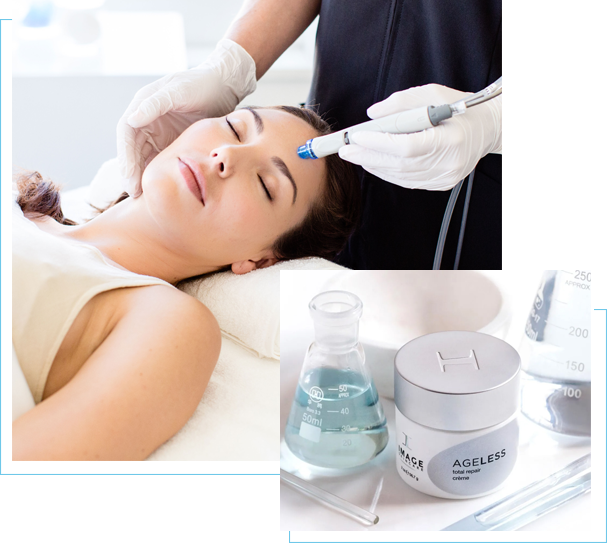What is Basal Cell Carcinoma?
Basal Cell Carcinomas, or BCCs, are the most common type of skin cancer. They grow from the bottom, or basal layer of the epidermis (the outermost layer of the skin). They can look like open sores, red patches, pink growths, shiny bumps, or scars. A sore that looks like it should heal, but never does, is a classic presentation. Basal Cell Carcinomas almost never spread (metastasize), but they can become highly disfiguring if ignored. Most of the time they develop on parts of the body that have seen excessive sunlight, such as the face, ears, neck, scalp, shoulders and back.
Who gets Basal Cell Carcinoma?
This is the most frequent form of cancer, period. Each year, there are nearly 3 million cases in the United States. Anyone with a history of sun exposure can develop BCC, but people who have fair skin, blond or red hair, and blue, green, or grey eyes are at the highest risk. They are much more common in older Americans, and more common in men than women.
Anyone who has had any other type of skin cancer is at a higher risk of basal cell carcinoma than the general population. This is usually because they have a combination of higher risk from a light complexion and have had enough ultraviolet or sun exposure that already led to cancer.
Types of Basal Cell Carcinoma
There are several types of basal cell cancer. Determining this can only be done via biopsy. The major types are:
- Superficial basal cell carcinoma. This type is present only in the top layer of the skin and is really easy to treat with a nearly 100% cure rate.
- Nodular basal cell carcinoma. This is a common type that is also highly curable, but usually requires treatment with destruction or surgery.
- Mopheaform, micronodular, or sclerosing basal cell carcinomas are all less common. They are also more difficult to treat and surgery is almost always required.

